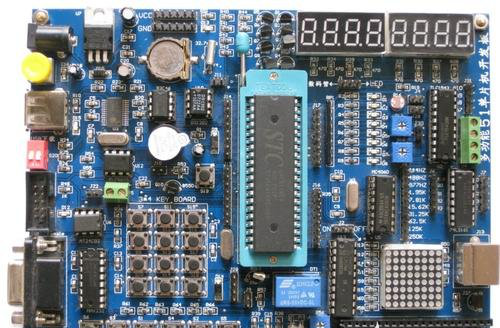What are the advantages of AVR microcontrollers and how to choose a single chip?
Compared with 51 and PIC microcontrollers, AVR has a series of advantages. The popular sayings are mainly reflected in these aspects:
(1), FLASH and EEPROM accumulators of all AVR MCUs can be repeatedly programmed and supported in ISP online programming (burning), the entry fee is very small;
(2), some chips are pin compatible with 51 series, easy to replace, such as ATtiny2313 compatible with AT89C2051, ATmega8515/162 compatible with AT89S51, etc.
(3) Each IO port can output a strong high and low level when it is output. When inputting, the IO port can be high impedance or with pull-up resistor;
(4), the chip has a wealth of practical resources, such as AD analog, DA digital model, rich interrupt source, SPI, USART, TWI communication port, PWM, etc.;
(5) AVR runs fastest under the same system clock;
(6), the use of advanced data encryption technology on the chip, greatly improving the difficulty of cracking;
(7), the FLASH space on the chip is large, the variety is large, the pin has 8 pins, and the other has 64 pins and other packages.
(8), on-chip integration of multiple frequency RC oscillator, power-on automatic reset, watchdog, start delay and other functions, making the circuit design very simple;

The choice of microcontroller.
All kinds of single-chip computers have their own advantages and disadvantages, should be selected according to needs. The principle of selecting a microcontroller is as follows:
1. The price of the burner is low. If it is ICP (programming the microcontroller on the programmer), can you use the existing burner? If it is a surface mount package, it is expensive to buy an adapter. Can ISP (in the system programming, that is, the chip is first soldered to the board and then programmed through the reserved ISP interface), the general ISP programmer is relatively cheap.
2. Enhanced functions of the MCU, such as watchdog, dual pointer, dual serial port, RTC (real time clock), EEPROM, extended RAM, CAN interface, I2C interface, SPI interface, USB interface.
3. Compared Flash with OTP (one-time programmable), preferably Flash.
4. Package IP (dual in-line), PLCC (PLCC has corresponding socket) or patch. The DIP package may be a bit more convenient when doing experiments.
5. Basic parameters of the microcontroller such as speed, program memory capacity, number of I/O pins.

